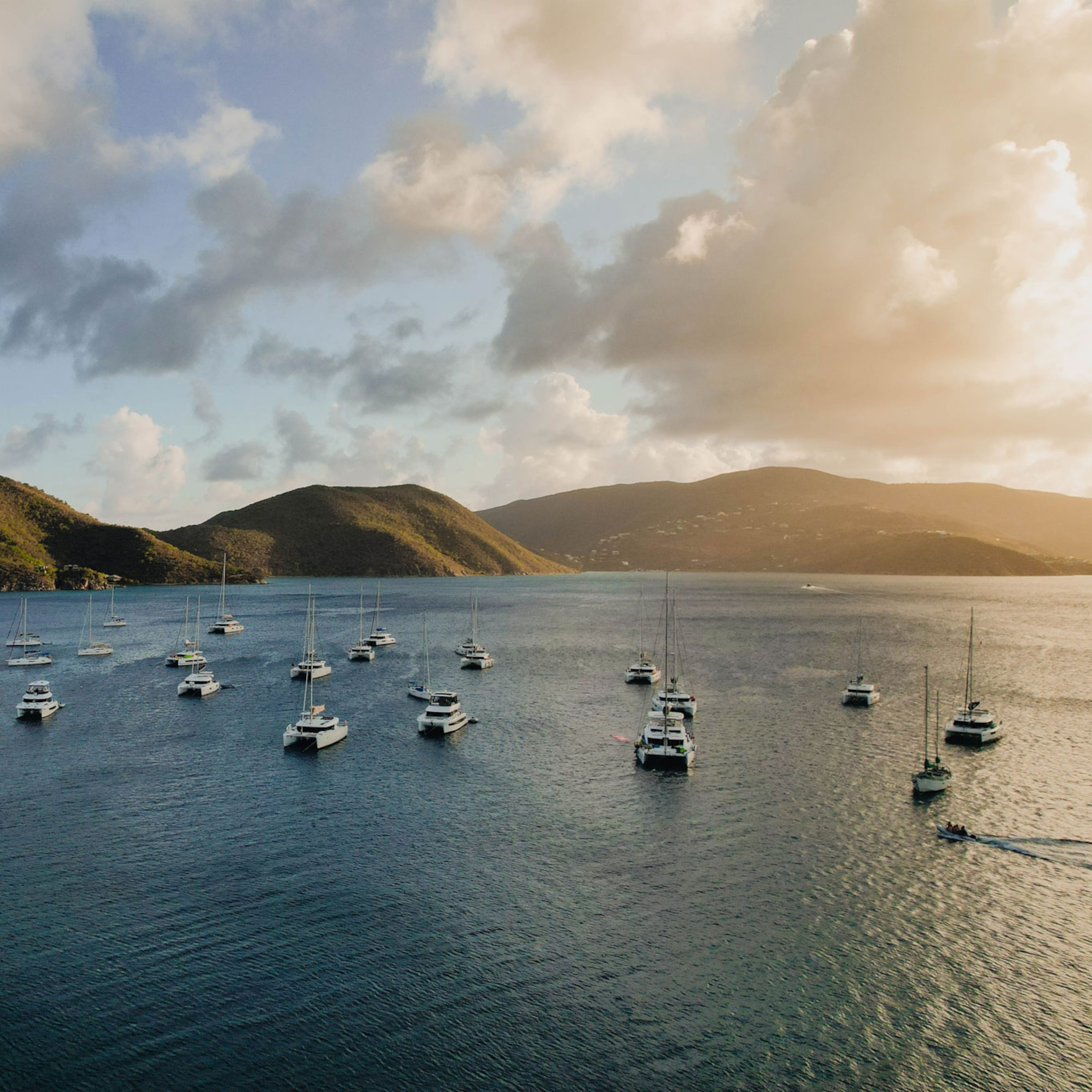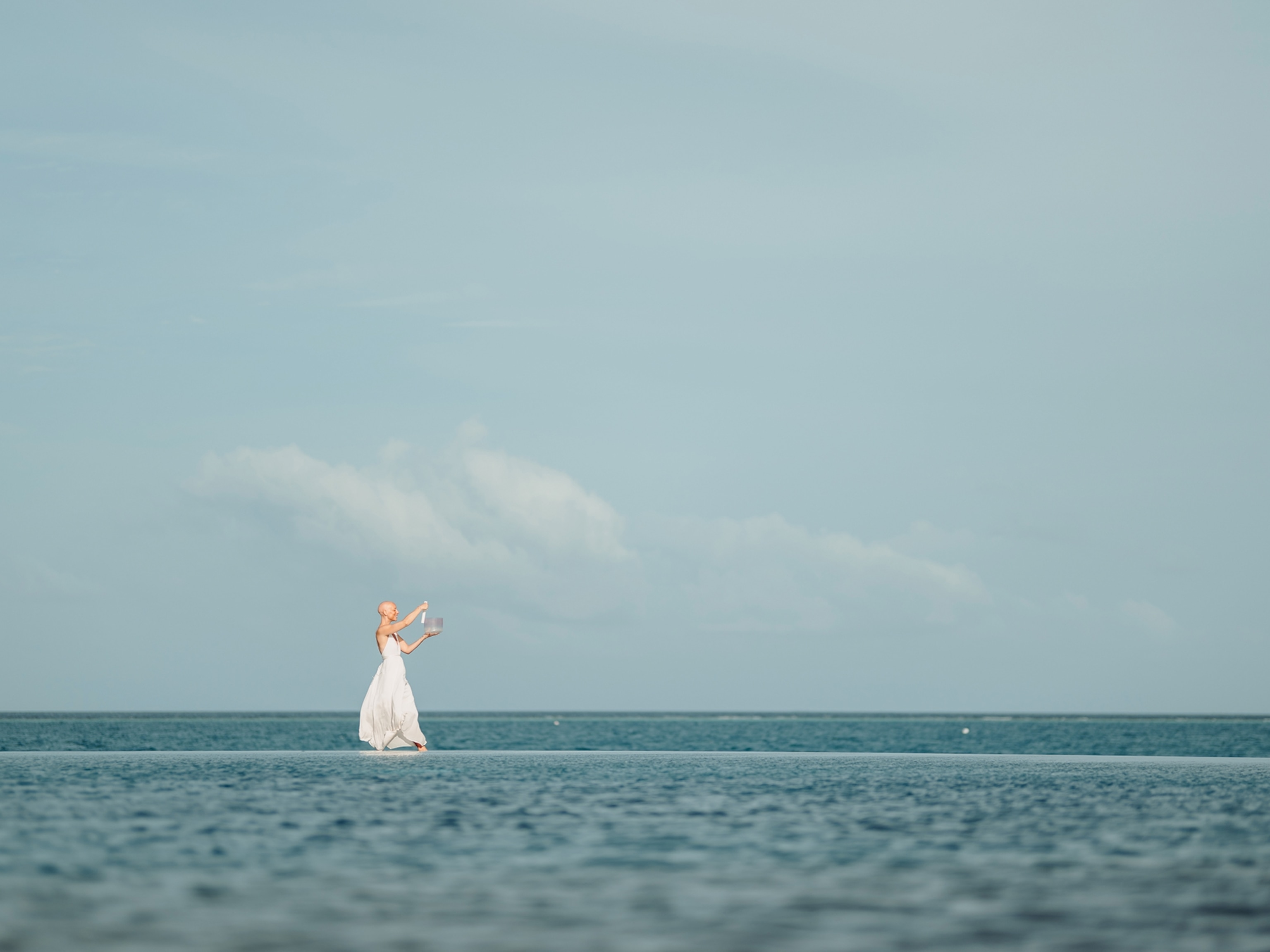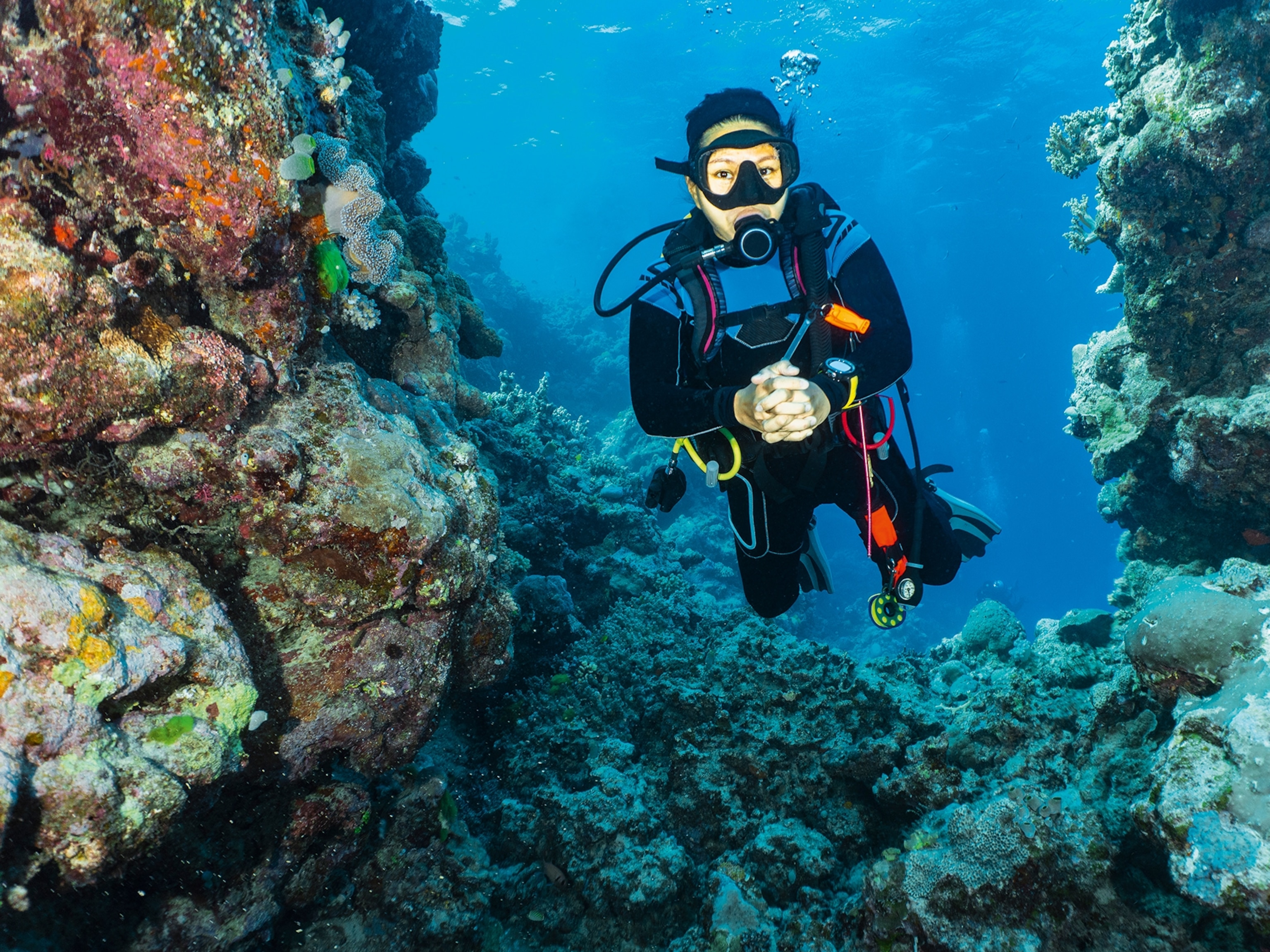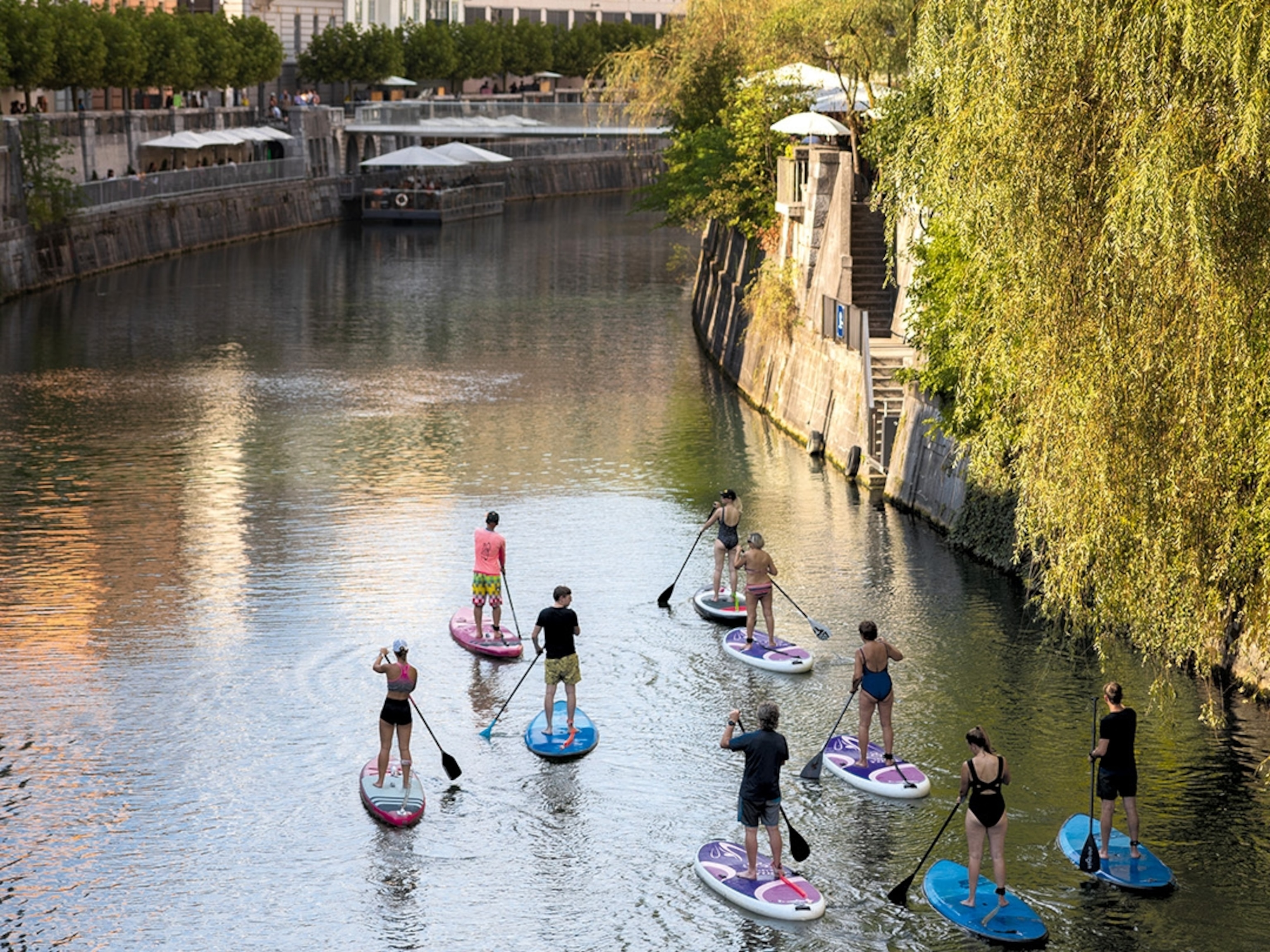
10 coastal adventures and activities to try right now
From coasteering to paddleboarding and wing foiling, find out how to make the most of your trip to the coast with these thrilling adventurous activities.
1. Kite surfing
Where: When it comes to optimal kitesurfing conditions, consistency is key, with flat, shallow water and reliable cross-shore winds being ideal. Langebaan lagoon near Cape Town, South Africa, offers all of the above.
When: Conditions between November and February are best.
What: Beginner courses start on the beach, working with a land kite and learning how to control the power of the wind. From there, you’ll familiarise yourself with the water kite, control bar, safety harness and board. Key skills include how to get upright in the water, how to change direction and how to ride up as well as downwind. Most beginner courses offer three half-days of tuition and should leave you safety-conscious and more or less independent, as well as fizzing with excitement at the sense of speed and power.
(Adventure 101: Kitesurfing in Turks and Caicos)
Who: Body-builder biceps aren’t needed, as the harness takes most of the strain. More important is a cool head and above-average swimming ability. While a wetsuit and buoyancy vest will be provided, and there’s always a safety boat on duty, there will be a fair amount of bobbing about in the water on your own.
How: Planet Kitesurf offers a seven-night trip starting from £2,000 per person B&B in the Windtown Lagoon Hotel, including flights, hire car and a nine-hour course of group lessons.

2. Open-water swimming
Where: Travellers searching for a sense of space and freedom far from the chlorinated confines of home-town baths could hardly do better than plunging into the Pacific for their first open-water swim. Off the west coast of Hawaii’s Big Island, you’ll encounter crystal-clear, sediment-free water and an eye-popping array of sea life. Indeed, it’s not uncommon to swim through rolling ocean swells in the company of manta rays and spinner dolphins. Back on terra firma, Kailua-Kona is an inspiring base, serving as the home of the Ironman World Championships for over 40 years.
When: Go in May and June when the winds are generally lighter and seas calmer.
What: Join a course such as Swimtrek’s Introduction to Open Water for coaching both onshore and off, as well as the company of like-minded beginners and a safety escort. Most are no more than half a mile in length, building to a final mile-long outing on Kealakekua Bay.
Who: Swimmers will need to be clocking up 1,640 feet back home before booking. They’ll then be sent a training programme to bring their fitness up another notch before they travel.
How: Swimtrek is offering two five-night Introduction to Open Water camps on Hawaii’s Big Island in May and June, starting from £2,050 B&B, not including flights. Accommodation is at the Courtyard King Kamehameha’s Kona Beach Hotel.

3. Coasteering
Where: Coasteering is said to have been invented in the Welsh city of St David’s in 1986, and Pembrokeshire’s western tip is still one of the best places to try this thrilling athletic pursuit. Not only do its cliffs, coves and half-submerged boulders provide the perfect coastal obstacle course, but they also wrap round three sides of the peninsula, so there will always be a spot that’s exposed or sheltered enough to suit any ability level, no matter the conditions.
When: Warmer water and calmer seas make summer best for beginners.
What: Coasteering is a thrilling combination of hiking, climbing, swimming and rock-jumping, exploring the line that separates land and sea, through caves and channels and over rocky, wave-beaten outcrops. This is a landscape usually reserved for shipwrecks and seagulls, so you’ll need to be properly equipped and led by expert guides. Thick 5mm wetsuits, life jackets, helmets and a pair of old trainers provide the required warmth and buoyancy, as well as protection against scrapes and bumps.
Who: Children need to be big enough to fit their wetsuits, while adults need to be agile enough to haul themselves out of surging seawater onto rocky ledges.
How: A four-hour coasteering trip with TYF starts from £70 per person. Twr y Felin Hotel is close to popular routes and TYF’s HQ. B&B doubles from £120 a night.
4: Dinghy-Sailing
Where: Winds are steady and light at Paleros beach club on the west coast of Greece. Here, a small armada of dinghies awaits your sailing pleasure, with friendly instructors on hand to show you the ropes.
When: From May to October.
What: While piloting your little boat might seem disorienting at first — push the tiller right and the dinghy turns left — you’ll find yourself progressing quickly if you stick with it; especially if you sign up for the daily sunset regattas at beginner-friendly Teras and Laser Picos.
Who: Anyone aged six and up can take lessons.
How: With Mark Warner, seven nights at Paleros start from £1,029 per person half-board including flights and transfers as well as sailing equipment and tuition. Structured RYA beginner’s courses cost £100 per person extra.

5. Skimboarding
Where: Anywhere in the world that has a gently shelving, sandy beach that’s free of rocks.When Long summer days.
What: Skimboarding is one of the most accessible beachside activities for anyone willing to give it a try. The boards themselves are usually made from wood or fibreglass-covered foam — shaped like a teardrop and a few centimetres thick. Throw it flat on a skein of sea water at the water’s edge, jump on board, and suddenly you’re skimming over almost nothing. Mistakes are often punished by painful, public pratfalls, but focus on flat water, not waves, and soon you’ll be having all the fun in the world.
Who: Young children will be most excited, but anyone who doesn’t mind falling over can give it a go.
How: Beginner skimboards cost as little as £20 but provide hours of splashy fun.
6. Paddleboarding
Where: It’s much easier to learn without the fear of falling into freezing water. A good wetsuit will help, or you could head to Croatia, where the water temperature hovers around a balmy 25C around the sun-drenched islands of the Zadar peninsula in summer.
When: Early September, when the crowds of speedboats and mega-yachts have thinned out.
What: Like surfing, paddleboarding is another beautifully simple sport. It’s just you, the board and your paddle. You’ll need to concentrate — and work your stomach muscles — to stay upright, but it’s the inherent tippiness of the sport that makes successful paddleboarding such an ego boost.
Who: Confident swimmers will enjoy it most, as well as those with some experience with canoes and kayaks.
How: Malik Adventures offers guided paddleboard tours of the Zadar peninsula starting from £1,138 per person B&B for six nights, staying in a family-run B&B on Molat and including all the necessary equipment, but not travel to Molat.

7. Scuba diving
Where: For vibrant fauna and flora both above and below the waterline, it’s hard to beat Belize. The PADI open-water qualification can be attained on the island of Ambergris Cay, with the final qualifying dive likely to be nearby on the world’s second-largest barrier reef among turtles and spotted eagle rays. You can also extend your trip with rainforest tours on the mainland.
When: Anytime other than the June-November hurricane season.
What: Qualification starts with some e-learning at home, followed by a couple of pool sessions and four open-water dives at the destination. You’ll learn all the basics along the way and be able to dive independently to a depth of 60 feet.
Who: If you’re the kind of swimmer who loves being underwater, scuba diving is a dream. PADI’s minimum age for open water divers is 10.
How: Dive Worldwide offers a week at Ramon’s Village Resort starting from £1,250 per person including air transfers from Belize City and the full PADI Open Water course, but not international travel.
8. Sea kayaking
Where: Sea kayaking has a relatively low barrier of entry, so first-timers can target somewhere adventurous from the get-go, such as the Johnstone Strait and Broughton Archipelago in British Columbia. Offering sheltered waters, wilderness camping and a mosaic of serene, forested islands, they’re a paddling paradise. The wildlife is truly exciting, with a might-see list that includes orca, humpback and minke whales, dolphins, bald eagles, black bears and sea otters.
When: Most tours run from June to September.
What: Landlubbers might find the long, sleek hulls of a kayak a little wobbly at first but a good expedition itinerary will provide enough time to get acquainted with the craft before the serious paddling starts. Expect four to six hours of paddling a day, with wind strength and weather varying the tempo.
How: Spirit of the West Adventures offers a five-night Johnstone Strait Expedition at £1,310 per person, full board and including camping and kayaking equipment, but not travel to and from the Alder Bay start point.

9. Wing foiling
Where: Dakhla is composed almost entirely of desert, wind and ocean, making this Moroccan lagoon on the edge of the Western Sahara heaven for aspirant wing foilers. Its sheltered waters, consistent cross-shore winds and complete lack of distractions make it the perfect spot to muscle through the difficult early days of learning.
When: Between March and October.
What: Wingfoiling was born as an offshoot of windsurfing, swapping out the big sail for an aerodynamic wing based on the shape of a flying fish. It may seem daunting at first, coordinating the hand-held wing with a fiendish little board underfoot. But when they work together, the board’s underwater foil generates lift and pushes you up, clean out of the ocean.
Who: While many people say that wing foiling is more accessible than kitesurfing, you’ll still need to be fit, flexible and light on your feet.
How: Seven nights’ full board at the Lagon Energy Dakhla resort starts from £1,500 including flights and transfers and six hours of private tuition.
10: Surfing
Where: It might be worth setting aside your daydreams of barrelling South Pacific waves and laid-back Indonesian surf camps when starting out. A first-time surfer needs a broad beach, a lively but not too mountainous summer sea and a well-developed infrastructure of surf schools and lifeguards. The north coast of Cornwall has all these things in spades — at Watergate Bay, you can follow your lessons with low-tide walks beneath towering sea cliffs.
When: June, early July and September are best.
What: Surfing’s simplicity is part of its appeal. All you need for a summer lesson is a 3mm wetsuit and a soft, fat ‘foamie’ surfboard, both of which will be provided by any decent surf school. You’ll learn in waist-deep water, catching rides on the bubbly surge of already broken waves. If you’re light on your feet and a have a good sense of balance, you could find getting upright easy enough, while most first-timers will take at least a few days to master the skill.
Who: Water babies of almost every age will enjoy a couple of half-day lessons — although children under the age of 10 will find the heavy boards a handful in rougher conditions.
How: Two-hour group lessons on Watergate Bay available from £45 per person. Nearby accommodation ranges from a £26 a-night pitch for a tent at the Watergate Bay Touring Park to the sporty and smart Watergate Bay Hotel, B&B doubles from £250 a night.
Sign up to our newsletter and follow us on social media:
Facebook | Instagram | Twitter







